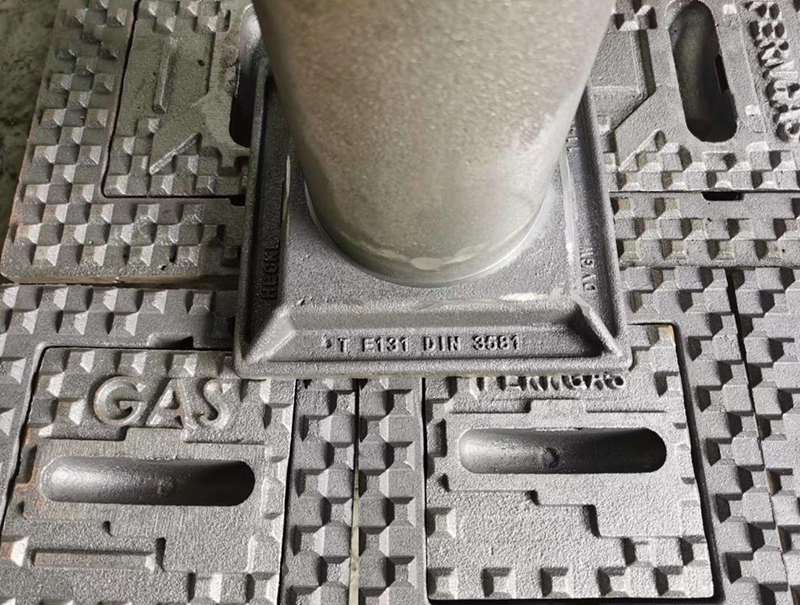Casting is a metalworking technique that has been practiced by humans for thousands of years, with a history spanning approximately 6,000 years. China was among the earliest civilizations to master this technology, reaching its peak in bronze casting between 1700 and 1000 BC. At that time, the process had already advanced significantly. Notable examples include the massive bronze vessel from the Shang Dynasty, weighing over 875 kilograms, the Zeng Houyi chime bells from the Warring States period, and the translucent mirrors of the Western Han Dynasty. Most early castings were tools, agricultural implements, religious objects, or items used in daily life, often with strong artistic elements. The casting process evolved alongside pottery techniques, greatly influenced by ceramic methods.
In 513 BC, China became the first country in the world to cast iron, producing a piece weighing about 270 kilograms. Europe began developing cast iron around the 8th century AD. The introduction of cast iron expanded the applications of castings, leading to innovations such as the installation of cast iron water pipes in Germany and France during the 15th and 17th centuries. With the Industrial Revolution in the 18th century, industries like steam engines, textile machines, and railways emerged, marking a new era for casting as it supported large-scale industrial growth. This period also saw significant advancements in casting technology.
Throughout the 20th century, the development of casting accelerated rapidly. One key driver was the advancement of product technology, which demanded castings with improved mechanical and physical properties while maintaining good machinability. Additionally, the growth of industries such as machinery, chemicals, and instrumentation provided favorable material conditions for foundries. Innovations in testing methods helped ensure consistent casting quality, while the invention of electron microscopes allowed scientists to study the microscopic structure of metals, deepening the understanding of solidification processes and guiding production improvements.
During this time, numerous high-performance casting materials were introduced, including ductile iron, weldable malleable cast iron, ultra-low carbon stainless steel, aluminum-copper, aluminum-silicon, and titanium- and nickel-based alloys. New techniques, such as inoculation treatment for gray cast iron, enhanced casting adaptability and performance.
After the 1950s, new technologies like wet sand high-pressure molding, chemical hardening sand, and vacuum molding significantly improved casting accuracy, surface finish, and overall quality. Foundry working conditions and environmental standards also improved. Among the major breakthroughs of the 20th century, the development of gray iron inoculation and chemical hardening sand molding had particular significance, breaking away from traditional methods and opening new possibilities for the casting industry.
Casting can be broadly classified into two categories: sand casting and special casting. Sand casting includes wet sand, dry sand, and chemically hardened sand types. Special casting methods use various materials, such as investment casting, shell molding, and metal casting, each with unique advantages.
The casting process involves three main stages: metal preparation, mold making, and casting processing. Metal smelting is more than just melting; it involves precise control of temperature, composition, and purity. Quality checks are performed throughout the process, and additional treatments like desulfurization and vacuum degassing may be applied to improve metal quality.
Mold preparation varies depending on the casting method. For sand casting, it involves selecting appropriate sands, binders, and additives, then mixing them into suitable molding and core sands. Modern foundries often use automated systems for modeling and core making, improving efficiency and precision.
After casting, the parts must be cleaned to remove gates, risers, and excess sand. Cleaning processes involve shot blasting and cutting equipment. Some castings require additional treatments such as heat treatment or anti-corrosion coatings.
Casting is an economical method for producing complex-shaped parts, especially in industries like automotive, marine, and aerospace. It allows for the creation of parts that are difficult or impossible to produce through other methods. Castings come in a wide range of sizes and materials, offering excellent mechanical properties, wear resistance, and corrosion resistance.
Despite its advantages, casting has challenges, including environmental pollution from dust, gases, and noise. Compared to other manufacturing processes, it requires more attention to pollution control.
The future of casting lies in higher performance, precision, and sustainability. New alloys, smelting techniques, and eco-friendly equipment will play a key role. Automation and flexible production will increase, allowing better adaptation to diverse product needs. Advances in quality control, including real-time monitoring and stress analysis, will further enhance casting reliability.
With the continuous development of electronics and testing technologies, casting professionals will explore deeper into metal solidification and sand compaction theories to improve casting performance. The integration of robotics and computer systems into foundry operations will become increasingly widespread, driving the industry toward greater efficiency and innovation.
Ensure secure access to your underground infrastructure with Manhole Covers. Our high-quality manhole covers are designed to provide durable and reliable solutions for accessing inspection chambers, utility enclosures, and other vital underground structures. Whether you're involved in residential developments, municipal projects, or industrial facilities, our Manhole Covers offer a robust and secure solution for maintaining access points that comply with safety standards and regulations.

Manhole Cover,Street Manhole Cover,Road Sewer Cover,Street Sewer Cover
Dandong Haichuan Machinery Co., Ltd. , https://www.ddhccasting.com